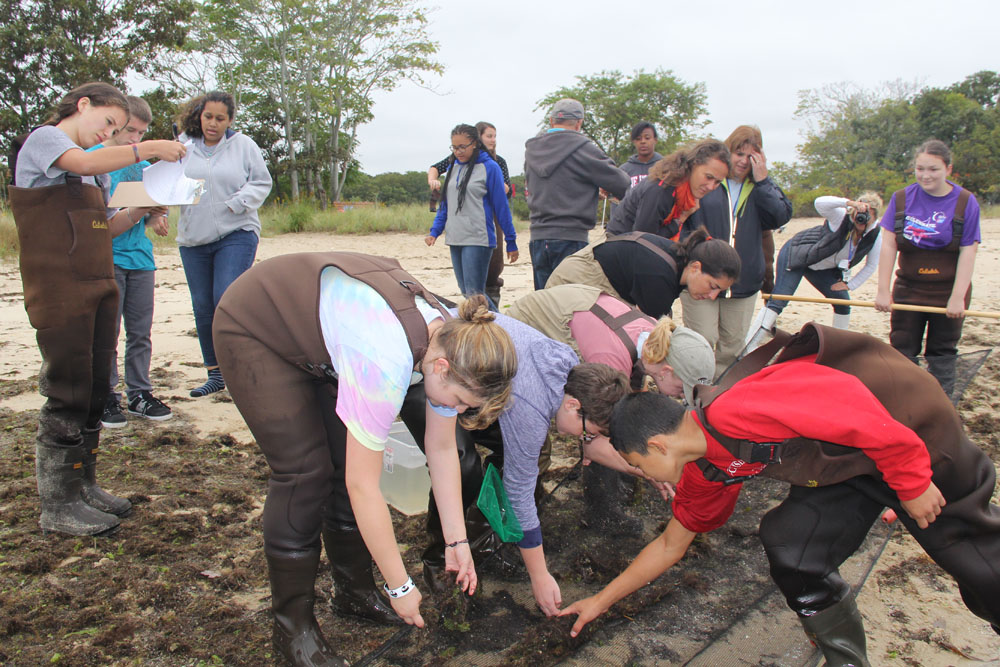Learning on the Peconic: Students connect class with nature

Students immersed chest-high in waders as they worked with fishing nets explored East End shorelines Wednesday morning, learning what “A Day in the Life of the Peconic Estuary” is like.
About 400 middle and high school students ditched their classrooms, rolling up their sleeves to collect data samples from one of 11 different beaches in an endeavor sponsored by over 30 environmental agencies to help inspire younger generations to learn about water quality issues.
Mel Morris of Brookhaven National Lab’s office of Education, one of the event’s many sponsors, said the different data sets — once combined — will help show students just how diverse their local estuary is.
“Each of these beaches are a bit different,” he told Southold Elementary students on the shore of Goose Creek Beach. “Each faces different challenges, and that data you are collecting can help show what those challenges are.”
Southold Middle School science teacher Russ Karsten said he was excited his fifth grade students — all 68 of them — were so hands on during the event.
“I teach students how to use rulers, thermometers, and wind gauges in the classroom, but this is a bit more of an authentic, real life experience,” he said. “It gives these scientific tools meaning, and you can see how engaged [the students] are.”
The kids took turns rotating between stations, looking at different aspects of the marine environment.
Using test tubes and different types of chemicals, students tested area water quality; measuring dissolved oxygen, pH, salinity, and even the amount of fecal coliform bacteria.
They also looked at the surrounding characteristics of the bay, identifying pollution sources such as homes, drains, and nearby parking lots that could be hurting area water quality.
Taking that information, it was time to look at the tides, air temperature and cloud cover, which also affects the water.
From there, they went seining — fishing bay waters with a specially designed net — identifying different species of seaweeds, fish and shellfish.
These were the same activities done by students all over the North Fork.
About 16 miles to the west, Riverhead High School earth science teacher Claire Yannacore and her students were waist high in bay waters, bringing back nets full of fish and seaweed from the waters off Indian Island Park beach.
Fascinated with something in the water, tenth grader Willy Montoya voyaged out alone, returning with a large whelk, otherwise know as a sea snail, which he showed off to all the others.
As all the students crowded around, one of the expert ecology volunteers taught students something unique about the shellfish: it only has one eye.
“You can’t help but get kids interested when you get them outside,” Ms. Yannacore said. “Everything around them is so cool, and some of them have never seen this stuff before, or if they have, they are proud to share their knowledge.”
Ten-year-old Chloe Hawkins of Southold said “this kind of data helps you see if there is something dangerous in the water,” explaining that days before the trip her teacher, Mr. Karsten, showed her class an article about algae blooms.
“After that I wanted to see if that was where I swim,” Chloe said. “I think there could be something going on in the water that maybe we don’t know about.”


